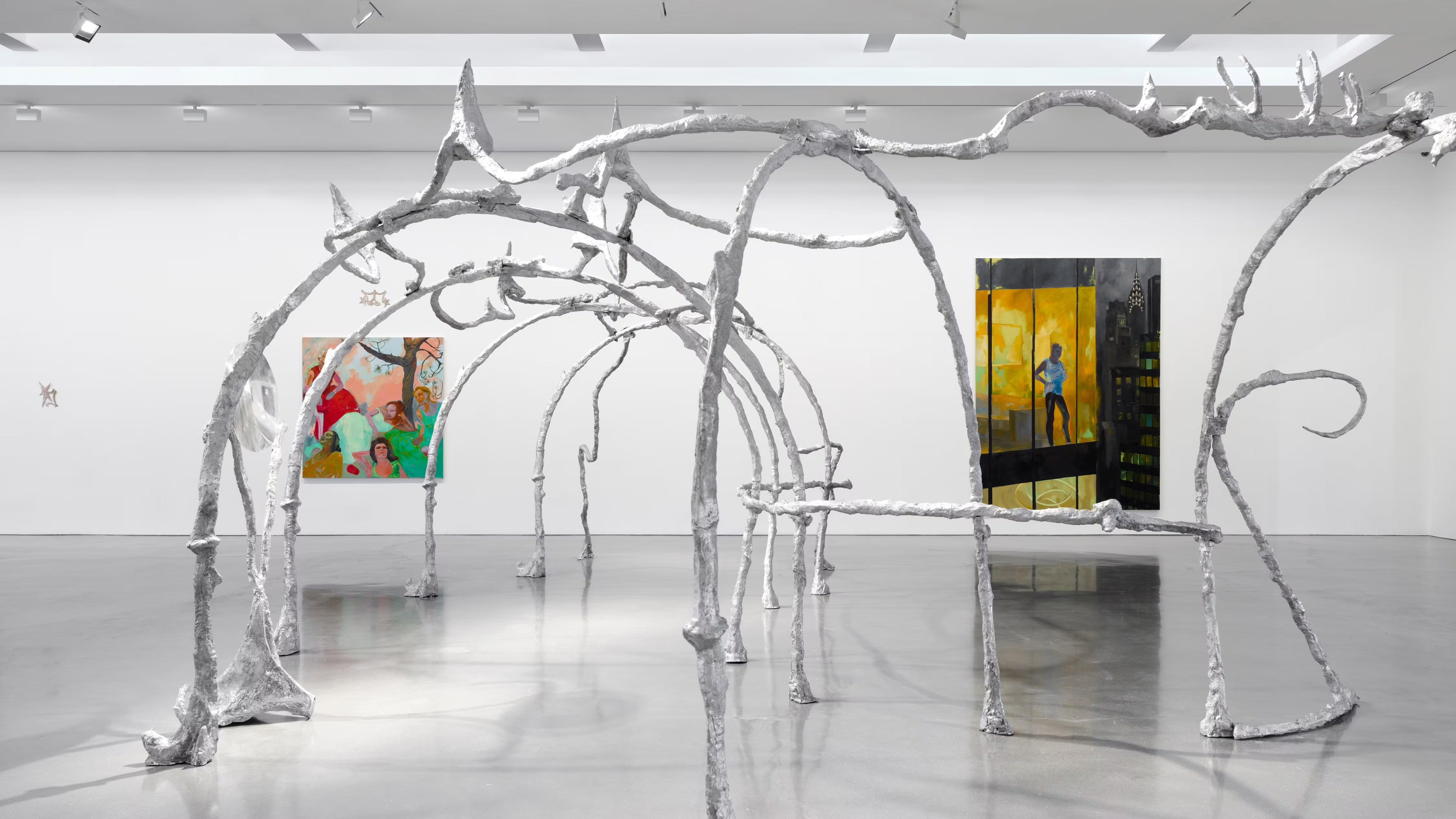
In Workers Leaving the Factory (1995), it was speculated that in 100 years of cinema, there probably have been more prison gates than factory ones. This video essay about workers’ struggle for self-determination in the 20th century by the great German documentarian Harun Farocki seems to suggest that, while audiences are willing to extend empathy and emotional commiseration to prisoners, they don’t give much thought to factory workers. The cultural prerogative granted to the final product does not extend to the labor process, let alone the laborers. But the enthusiasm for the products, however ephemeral they prove to be as they circulate within the free market, never wanes—think of all the Disney films with Christmas shopping and merry gift-giving montages.
In a new show at New York’s YveYANG Gallery, sculptor Huidi Xiang scrutinizes this imbalanced representation of maker-versus-product by taking up the enduring story of Cinderella (1950) and foregrounding the mice and birds who make Cinderella’s first ball gown, the one her stepsisters destroy before her fairy godmother steps in. These crucial critters in the fairy tale—its narrative driven by class aspirations and allocations of labor—are sidelined in collective cultural memories of the film. But their story is retold through a twofold gesture of nostalgia and rediscovery in Xiang’s exhibition, titled “goes around in circles, til very, very dizzy” after lyrics in the animals’ “Work Song.”

On the wall of the gallery’s rear room, the dress’ final trimmings manifest in an aluminum sculpture, goes around in circles, 2024, with sashes and bows flattened and laid out in two horizontal rows. In this abstract transformation, the dress’ feminine contours become a formal study of fundamental patterns. A couple hand-needles placed at the intersecting points of the material suggest the performance of critical sewing work. The product of the animals’ labor is always in flux—as the piece raises the processual and relational concerns surrounding Cinderella’s first ball gown. It’s no longer a mere symbol of the cinematic heroine-in-distress trope, the failure of her aspirations embodied. Instead, the dress, which never gets its moment in the spotlight, becomes a timeless micro-monument to forgotten labor.
The location of this show is intentional. Before the exodus of manufacturing from downtown Manhattan, a sewing machine factory stood on the site of YveYANG Gallery on Wooster Street. Nodding to this history, the artist arranged zig-zagging lines of small woodblocks, each sporting tiny red legs, along the floor and walls. The configuration evokes stitches both literally and metaphorically, knitting together the social fabric between factory laborers and art-world intelligentsia. No class divide is set in stone, it seems to say. Alongside these processions sit various objects and/or body parts: Here, two disembodied hands of worker mice meld together. There, suspended above them, hangs a larger-than-life needle that’s sprouting fingers.
_result.avif)
Tracing their direction, these woodblocks-as-stitches eventually lead to a series of zany wall-works depicting scenes with the destroyed dress, carved into wood bricks with a 3D-printed resin frame emulating a knotted length of red rope. (Xiang’s frequent use of the color red recalls Walt Disney’s union-busting tactics in the post-World War II Red Scare, namely in accusing workers and labor organizers at his studios of being communists.) These images capture the invisible forces of labor. In the compositions, only the creatures’ clothes are discernible, while their bodies, rendered with only the faintest of contours, fade into oblivion. In who sewed it, 2024, a mouse seamstress, her form subsumed by the texture of the wood carving, appears indistinguishable from the tool she is using. Perhaps this approach reflects Xiang’s understanding of how, ontologically speaking, first-person documentations of real-life labor are forever failed by the idealized narratives that, despite being fully removed from the original experience, seem to be what sticks in the public’s mind.

“Goes around in circles, til very, very dizzy” is both melancholic and humorous. Animated in their objectification while alienated under their labor, the mice and bird workers as represented in Xiang’s works succumb to the delightful dramatics of personified tools and trimmings. Such theatrics, with their enduring appeal in how we memorialize labor, suggest that the factory, as both a real and imaginary site, dictates how we picture the activity under its roof. The message is not a tragic one: Even sidelined characters in a Disney film, with the fruits of their physical exertion callously destroyed, may get a second life when the legacy of their efforts receives its due recognition.
Huidi Xiang: “goes around in circles, til very, very dizzy” is on view until March 1, 2025 at YveYANG Gallery at 12 Wooster St, New York, NY 10013.
















.avif)


_result_result.avif)



.avif)

_result_result.avif)

_result_result.avif)
.avif)

_result_result.avif)


_result_result.avif)


.avif)




.webp)

.avif)















%20(1).avif)
.avif)




.avif)










.avif)


.avif)





















.jpeg)

.avif)

_11%20x%2014%20inches%20(2).jpg)







.avif)

.jpg)

%20(1).jpg)
.avif)
.jpg)

.jpg)
.webp)


.webp)



.webp)


.webp)


.avif)












.avif)
.avif)












.avif)



.avif)




















-min_result.avif)








.avif)







3_result.avif)
_result.avif)






_result.avif)




.avif)




.avif)













_result.avif)




%2520(1)_result.avif)
_result.avif)


_result.avif)

_result.avif)



.avif)

.avif)






.avif)














.avif)


_result_result.avif)
















-min_result.avif)






.avif)
.jpg)
















_result.avif)

.avif)


.avif)







.avif)





.avif)

_result.avif)



.avif)












.avif)


.avif)














.avif)




.avif)








.avif)

.avif)

.avif)



.avif)


.avif)




.avif)

.avif)

.avif)
.avif)
%20(1).avif)
.jpg)

%20(1).avif)








.avif)
.avif)

.avif)






.avif)


.avif)
.avif)



.avif)
.avif)
%20(1).avif)

.avif)
.avif)



















.avif)
.avif)
